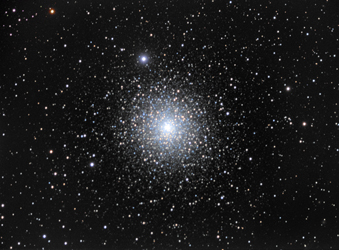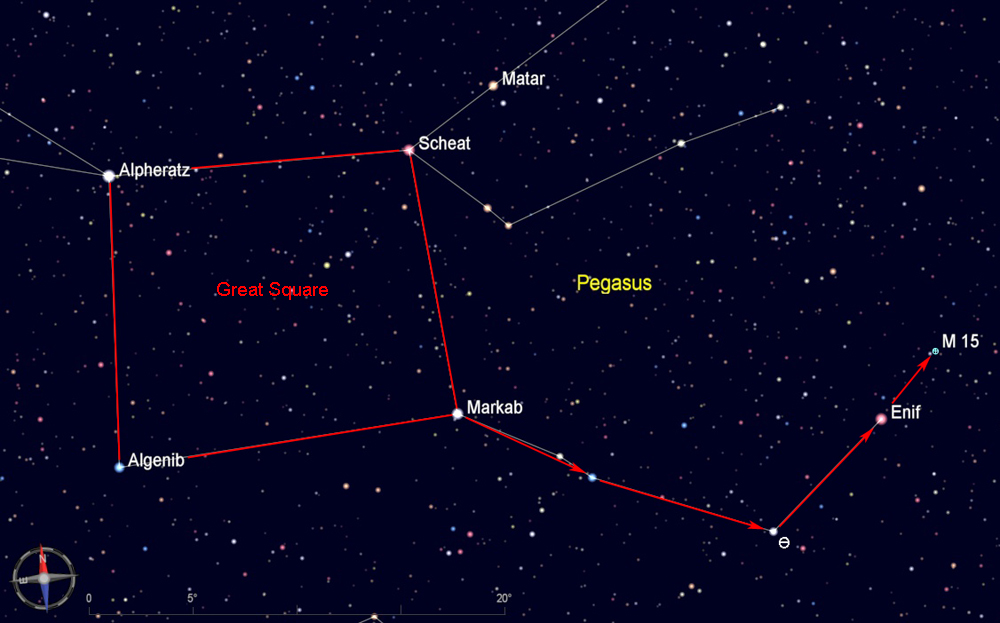
Start by finding the Great Square of Pegasus, which rises in the eastern sky during the early fall evenings, is high overhead later in the fall, and sinks in the western sky during early winter. To be sure you know how the square is oriented in the sky, look for the two stars outside the northwest corner of the square (circled in the chart below) that form a small triangle with Scheat.

Starting from Markab at the southwest corner of the Great Square, follow the chain of stars to theta (θ) Pegasi, then take a left to Enif, the brightest star in that region of the sky. Extend the line from θ through Enif to a spot about 4 degrees to northwest, as shown in the chart below, and point your telescope there. With a low-power eyepiece, you should be able to spot M15 as a hazy ball. Then use higher magnification to get the best views of this cluster.
